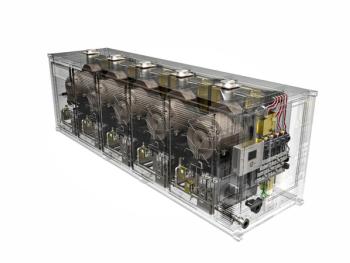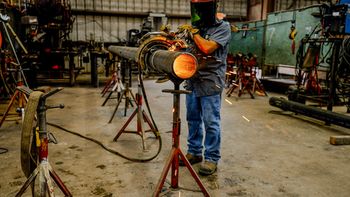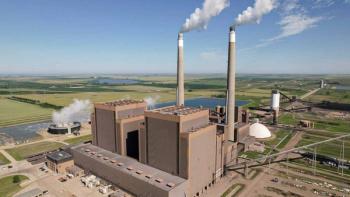
POWER PLANTS ARE SUFFERING UNNECESSARY LOSSES
I recently visited a newly commissioned 500 MW natural gas combined cycle plant in Europe to perform a total plant efficiency audit. Such an audit usually reviews the total plant performance, including all ancillary, auxiliary equipment and other parasitic losses. The plant operator proudly explained to me that this, the almost latest generation of gas turbine combined cycle plants, was operating at a thermal efficiency exceeding 60%.
Readers familiar with the newest generations of combined cycles built around G, J, and H frame gas turbines will have seen the beauty and complexity of a modern natural gas combined cycle plant running at peak firing temperatures, high operating pressures, using state-of-the-art aerodynamics and advanced super-alloy materials.
But this column is not about modern power plant efficiencies, heat rates, and what can be optimistic performance claims based on faulty definitions. This is about often ignored, but relevant incremental efficiency gains and power losses in these plants.
I had the opportunity to closely inspect the equipment and operation of the facility. It used ultra High Efficiency Particle Air (UHEPA) inlet filters with inlet silencers and an inlet ducting system that was far from aerodynamically optimized.
The result was a pressure drop of nearly seven inches of water across the inlet system. A quick calculation showed that this pressure drop led to a gas turbine heat rate increase of 1.3% and a gas turbine output power loss of almost 3%.
Similarly, an exhaust pressure drop of nearly 16 inches of water was observed from the gas turbine through the silencer, the heat recovery steam generator (HRSG), and to the stack outlet. This resulted in another performance loss of approximately 2.5% in efficiency and 3.5% in power.
The same plant used oversized boiler feed water pumps operating at a part load with a fairly low pump efficiency, and two fuel gas compressors with the gas recycle valves 50% open during normal operation. The parasitic losses of these inefficiently run pieces of plant equipment added approximately 0.3–0.5% efficiency loss.
There were a number of other inefficient balance of plant design choices, such as using undersized lube oil filters, continuously running redundant lube oil cooler and enclosure ventilation motors, and incorrectly set fuel gas heaters. These added losses of nearly 0.3%.
A performance calculation showed that by optimizing the gas turbine’s inlet and exhaust system, shutting down needlessly running motors, and reducing other parasitic losses, the plant total efficiency could be raised by approximately 5%. Real plant efficiency was not greater than 60% as advertised, but closer to 56% due to unnecessary power losses.
It is important to note that the plant operating company paid a premium to acquire modern gas turbines and steam turbines with very high efficiencies. Yet the overall plant design was so poor that significant performance gains were thrown away.
From a thermodynamic perspective, inlet and exhaust pressure drop directly takes away from the compression ratio that the gas turbine’s compressor produces, moves the compressor off its best design point, and results in a disproportional gas turbine power and efficiency loss.
In extreme cases, a poorly designed inlet duct can lead to a non-uniform gas turbine inlet flow distribution at the bellmouth, which impacts the loading, surge margin, and the life of the gas turbine’s compressor.
A good inlet filtration system is necessary to keep the gas turbine compressor clean and avoids fouling, erosion, and corrosion. It is also important to recognize that the pressure drop across the inlet filtration system has a direct performance impact on the gas turbine.
The selection of the inlet filtration system, the inlet and outlet silencers, and the ducting and stack design are all design decisions that should be balanced between gas turbine performance, degradation, parts life and capital costs. Similarly, the balance of plant design should consider cost, safety and optimized plant operation for minimal losses.
When designing power plants, it should be considered that the plant may not always run at full load. With the onset of large quantities of highly fluctuating and unpredictable alternative energy electricity sources, primarily wind and sun, many natural gas power plants operate in cyclic or load following modes.
The impact on efficiency at part load operation for the gas turbine and steam turbine cycle is commonly understood, but the impact on ancillary, auxiliary, and parasitic loads is less discussed and often more complex. These losses often increase non-linearly at part load plant operation.
If an operator is willing to invest in the most efficient gas turbine power plant, it is also worthwhile for the operator to invest in properly designed inlet/exhaust systems and the balance of plant to minimize parasitic and ancillary losses. This will maximize dollars per kilowatt produced.
Newsletter
Power your knowledge with the latest in turbine technology, engineering advances, and energy solutions—subscribe to Turbomachinery International today.




